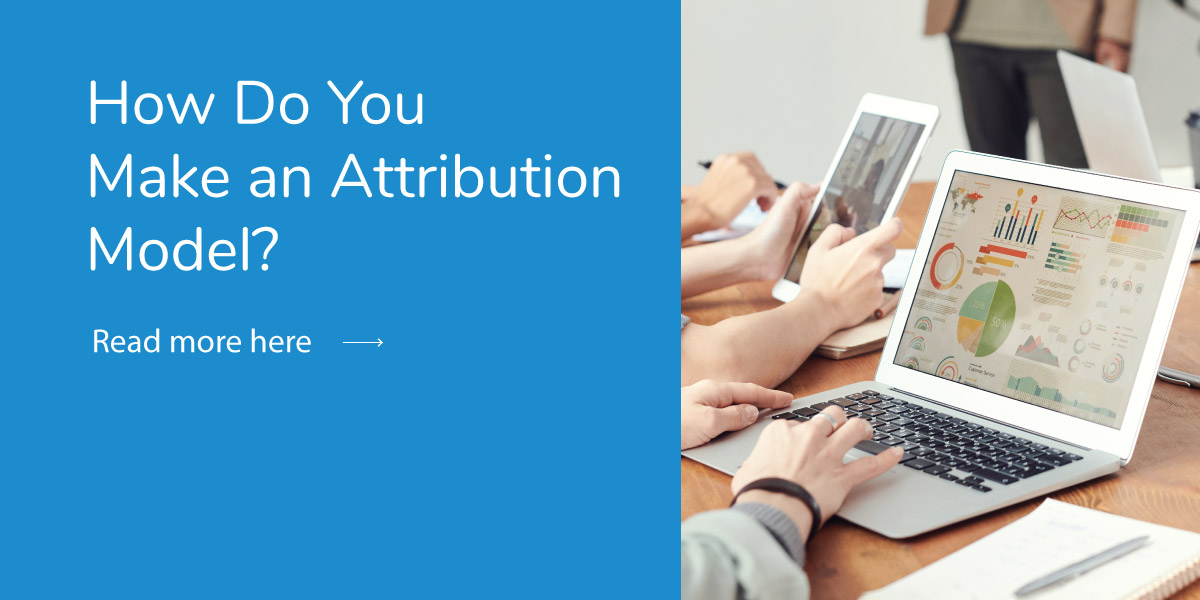
In order to truly know how your marketing efforts are stacking up, you need to understand where your customers are coming from and which ads, keywords, and landing pages are converting them from visitors into paying customers. This is why attribution models are important. In short, an attribution model is a set of rules that assigns credit for conversions at customers' touchpoints along the buying journey.
What is Attribution Tracking?
Attribution tracking is a process that enables you to assign credit to the various interactions consumers have from the time they learn about you until they convert into customers. In doing so, you'll be able to see which marketing channels have the most impact and understand how you can make the most of your efforts.
For example, let's say John does a quick Google search and finds your website because your pages are optimized for search engines (SEO). He clicks through your website, reads some of your blogs and browses around, but he's not ready to make a purchase just yet. A few days later, he then does another search when he is ready to make a purchase. This time, he's already familiar with your brand and searches for your company name when he's ready to buy. But, how do you know which channels and touchpoints were most vital to the conversion process? How do you know where to focus your efforts to get more conversions?
In the above example, there were only a few steps in John's buying journey, but some journeys take dozens of steps and go through multiple mediums, including:
- Online Catalogs
- Email Newsletters
- Phone Calls
- Influencer Videos
- Clicking Through from a Social Media Chatbot
How Do You Set Up Attribution Modeling?
First, you'll want to decide which attribution model is best for your business. There is no one-size-fits-all solution that works for everyone. Once you choose what you're most interested in learning from your customers, you can lean on the attribution model that makes the most sense for your unique efforts. For the best results, you can lean on marketing professionals who specialize in marketing analytics and attribution every day.
It's important to understand how customers are finding you so you can continue to attract new patrons to your website. There are several different types of data attribution models to choose from.
Last Click Attribution
Also called last touch attribution, last click attribution models dedicate all of the income to the very last touchpoint the customer interacted with before making a purchase. Your customer might have clicked on a Google ad, meandered around your landing page, then come back to your site directly a week later. With a last click attribution model, the final touchpoint would get all the credit and the other campaigns or channels the customer interacted with would not be counted.
First Click Attribution
In a first click attribution model, you would assign 100% of the value to the very first interaction.
Linear Attribution
Linear attribution models give equal weight across each of the touchpoints in a customer's journey. This works well for conversion paths that only have a few touchpoints, but if a customer interacts with 20 different channels before making a purchase, it's likely they all didn't have the same bearing on that person's decision to buy.
Time Decay Attribution
The time decay attribution formula assigns more weight to the most recent touchpoint. Earlier touchpoints get less credit, decreasing until the very first touchpoint receives the least amount of value. This approach is useful in assessing the value of many visits that lead to a purchase.
Position Based Attribution
Position based attribution assigns 40% of the credit to the first and last clicks, respectively, and divides the remaining 20% up among the middle interactions. This is helpful in learning how someone found you and what converted them while still giving some of the other channels credit.
Get the Numbers Behind Your Customers' Journey
With the DemandJump platform, you can compare different attribution models side by side so you know how each channel impacts the conversion. Once you know where your customers are coming from, you can adjust your strategy and put more focus on the channels that are working. If you're ready to see the numbers behind your customer journey's, reach out for a demo or start your 7 day free trial.

